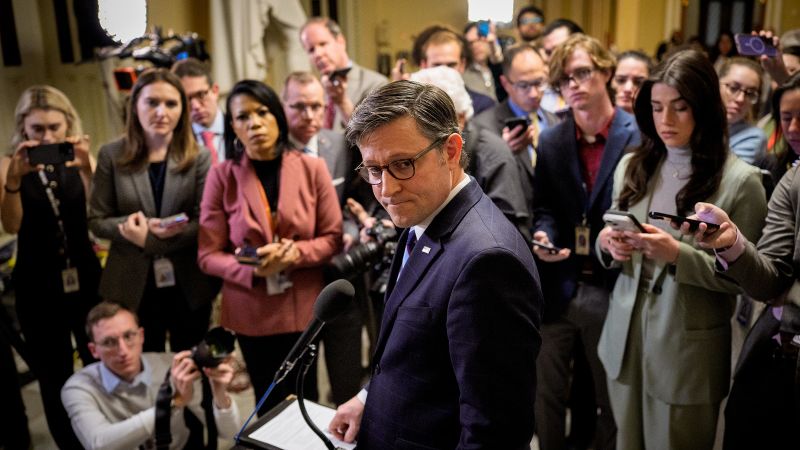House Republicans have recently disclosed an outline of a comprehensive bill aimed at advancing President Donald Trump’s policy objectives. This legislation is poised to allocate approximately $150 billion for defense initiatives alongside significant funding for border security. Such financial investments underscore the administration’s commitment to enhancing national safety and bolstering military readiness, which have been central tenets of Trump’s agenda since he assumed office.
As these developments unfold, Trump and House Speaker Mike Johnson are scheduled for a meeting at the White House on Monday afternoon. This date coincides with the return of Congress from a two-week break, marking the beginning of a pivotal period in the legislative calendar. The timing suggests a sense of urgency among Republican leadership to move forward with their agenda as lawmakers reconvene and grapple with the pressing needs of the nation.
In a coordinated strategy, a total of eleven different House committees are expected to release segments of the larger bill over the coming days. Following this phase, the various aspects will be compiled into a singular, expansive legislative framework that Johnson aims to present for a vote before the upcoming Memorial Day weekend. This ambitious timeline reflects an eagerness among Republicans to solidify their policy goals in a timely manner, but it also hints at possible challenges in achieving unity among party members.
One notable area of contention that remains unresolved within the proposed bill lies in the context of approximately $1.5 trillion in proposed cuts to federal programs. Additionally, plans for an extensive overhaul of the U.S. tax code introduce another layer of complexity. These substantial fiscal changes will require careful negotiation and consensus-building among House Republicans to avoid rifts that could detract from broader legislative progress.
The provisions pertaining to defense and homeland security, while generally more palatable among the Republican base, represent an essential component of Trump’s overarching agenda. The proposed $150 billion investment in defense includes key initiatives such as the “Golden Dome” missile defense system, which is allocated $25 billion, and substantial investments in shipbuilding and munitions, indicating a robust approach to military enhancement. The House Armed Services Committee is set to commence voting on this specific portion of the bill, which illustrates the priorities placed on national defense.
In addition to defense measures, the House Homeland Security Committee is proposing $46.5 billion earmarked for constructing new border barriers, highlighting the administration’s strong stance on immigration and border security. Additional allocations include $5 billion for new Customs and Border Protection facilities, $4 billion for expanding personnel at the border, and substantial investments in cutting-edge technology for enhancing security measures. Notably, the proposal also sets aside $1 billion for security and logistical planning related to the 2028 Olympics and $625 million for the 2026 FIFA World Cup—integrating global events into national security considerations.
The voting process for these border security initiatives is also expected to commence with the House Homeland Security Committee’s session on Tuesday, indicating a concerted effort to advance both defense and security measures simultaneously.
To facilitate the swift advancement of these proposals through Congress, the House and Senate GOP is employing a legislative tactic known as “budget reconciliation.” This method allows them to push forward with their plans while circumventing potential filibusters in the Senate. By adhering to the strict rules governing this process, the GOP can maneuver the legislative landscape without necessitating support from Democratic counterparts, although it imposes certain constraints on their fiscal strategies.
As these legislative maneuvers unfold, heightened attention will remain on the negotiating dynamics within the Republican Party and the potential impacts of these proposed measures on the American populace. The timeline for these developments, along with the contentious nature of certain provisions, suggests a complex, high-stakes scenario as legislators strive to enact substantial changes in federal policy.



